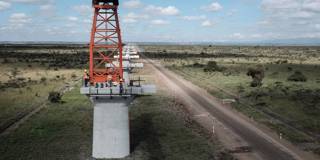The details of China’s loan contracts with developing countries are only beginning to come to light. But it is already clear that China’s creditor imperialism holds far-reaching risks, both for the debtors themselves and for the future of the international order.
NEW DELHI – Recently released details of Kenya’s 2014 loan agreement with China to finance a controversial railway project have once again highlighted the predatory nature of Chinese lending in developing countries. The contract not only imposed virtually all risk on the borrower (including requiring binding arbitration in China to settle any dispute), but also raised those risks to unmanageable levels (such as by setting an unusually high interest rate). With terms like that, it is no wonder that multiple countries around the world have become ensnared in sovereignty-eroding Chinese debt traps.

NEW DELHI – Recently released details of Kenya’s 2014 loan agreement with China to finance a controversial railway project have once again highlighted the predatory nature of Chinese lending in developing countries. The contract not only imposed virtually all risk on the borrower (including requiring binding arbitration in China to settle any dispute), but also raised those risks to unmanageable levels (such as by setting an unusually high interest rate). With terms like that, it is no wonder that multiple countries around the world have become ensnared in sovereignty-eroding Chinese debt traps.